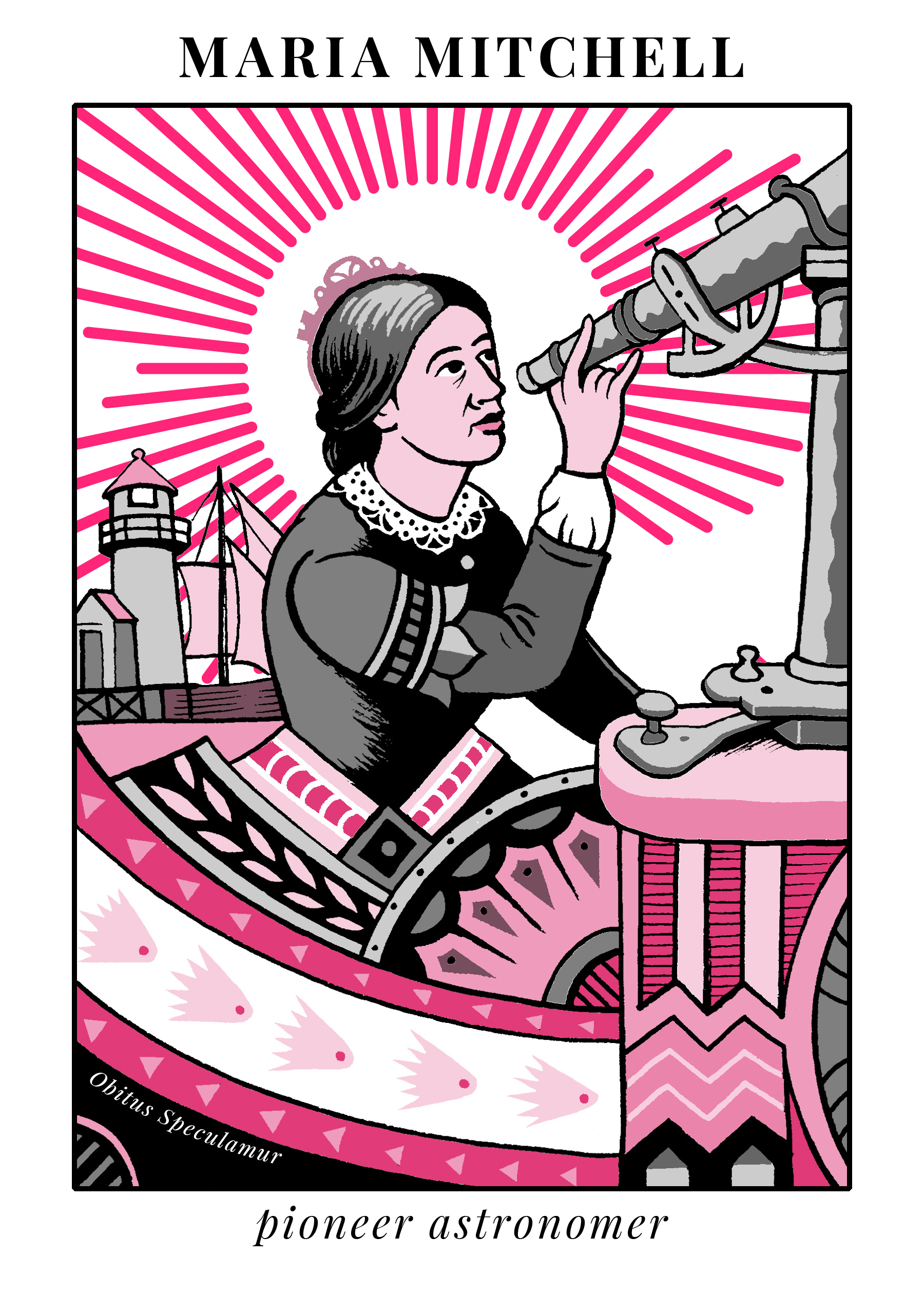Meet Maria Mitchell, the first American to discover a comet
She imagined what potential there would be if women were allowed to pursue something they were passionate about
Matteo Farinella
Maria Mitchell spent the best part of 10 years perfecting a diligent nighttime routine: She would climb to the rooftop of her childhood home on clear nights to sweep the heavens with a state-of-the-art telescope, slowly and methodically. It was during one such clear night, on October 1, 1847, after excusing herself from a dinner party, that Mitchell, then 29 years old, saw a blurry streak of light in the sky — a comet that would propel her to be the only widely recognized and respected female astronomer of her time.

Matteo Farinella
Mitchell was born August 1, 1818, on Nantucket, a small island off the coast of Massachusetts used as a whaling station. She was the third child of Lydia and William Mitchell, an astronomer and schoolmaster. Together, Lydia and William created a family environment that encouraged learning and intellectual exploration, where the central household chore was “brain work.” Math was a vitally important subject to William, who spent every evening observing the stars and always enlisted his children’s aid during these conversations.
Of all of Lydia and William’s nine children, it was Maria who developed a particular fondness for the night sky at a young age. She enjoyed the solitude it afforded her and her father’s undivided attention. She learned how to identify stars with her father’s tutelage and taught herself math using a relative’s extensive library collection. When Mitchell was 17, she opened her own small school, which was widely successful and led to her being appointed the librarianship at the local library, the Nantucket Atheneum. Mitchell would spend hours devouring the many books, giving herself, in essence, a college education. She taught herself the most advanced astronomy of her time through the books at the Atheneum.
Scientists are trained to be skeptical of all discoveries, so it is not surprising that when Mitchell discovered what would later become known as “Miss Mitchell’s Comet,” she was reluctant to lay claim to its discovery. With her father’s urging and the support of others, she published a preliminary notice of her cosmic discovery on November 12, 1847. The comet was officially recognized on February 11, 1848, and was deemed “Miss Mitchell’s Comet,” and represented the first comet discovered by an American. However, it was not enough to discover a comet. In order to truly make the comet hers and be recognized by the American astronomical community, Mitchell calculated her comet’s orbit -- a significant feat considering it was a hyperbolic comet, meaning it was either falling into our solar system or being pushed out. These two orbits can be challenging to calculate.
After the discovery and publication of the new comet in the astronomical journals of the time, Mitchell’s fame rose. She became both the first woman elected to the American Academy of Arts and Sciences and the first to enter the American Association for the Advancement of Science (AAAS). She was later appointed as the official computer for the orbit of Venus for the U.S. Nautical Almanac, which provides the U.S. Navy with a convenient form of the astronomical data needed for celestial navigation.

Maria Mitchell (left) and students at Vassar College
ID 08.07.07, Archives & Special Coll at Vassar College Library
Later in life, Mitchell became a passionate advocate for women’s education. She was appointed a professor of astronomy at the newly founded Vassar College in Poughkeepsie, New York, which at the time was dedicated to providing women with an advanced education that was previously only available to men. There, Mitchell mentored many students, including Mary Whitney, who would later become an astronomer and fight against the notion that women could not sustain scientific research. She recognized that women of her time faced many barriers to pursuing science, saying that “No matter where you are nor what you are, you are a power – your influence is incalculable.”
Mitchell spoke about how women should not be forced to study music. She imagined what potential there would be if women were allowed to pursue something they were passionate about instead of becoming “respectable performers” to entertain guests. She also argued that women needed to get out from under the authority of the men in their life to allow for the freedom of thought.
Mitchell was celebrated as America’s sole scientific heroine by the public for most of her life. She was a distinguished and widely recognized scientist, making significant contributions to the field of astronomy and a fierce advocate for the education of women. She retired from Vassar College in January 1888, after 23 years of serving as a professor. She retired to her house in Lynn, Massachusetts and constructed an observatory, continuing her work. She even took on the pursuit of studying Greek since her eyesight was failing her and she refused to give up her habit of studying.
Shortly after Mitchell’s death in September 1889, Wide Awake, a monthly magazine intended for children, highlighted her prominence as a professor at Vassar, and noting that she “…gave astronomy a prominence there that it has never had in any other college for women, and in but few for men. I suppose it would have made no difference what she had taught. Doubtless she never suspected how many students endured the mathematical work of junior Astronomy in order to be within range of her magnetic personality."